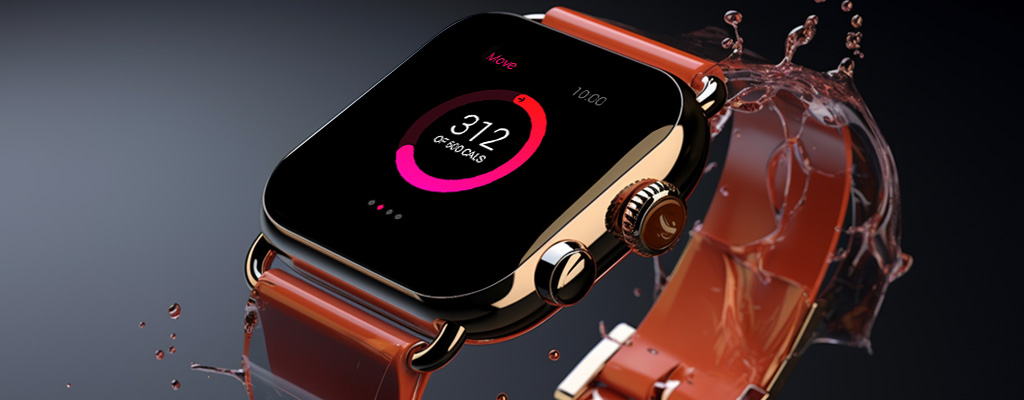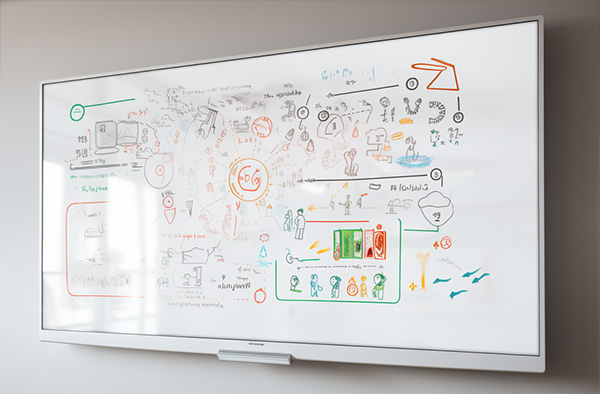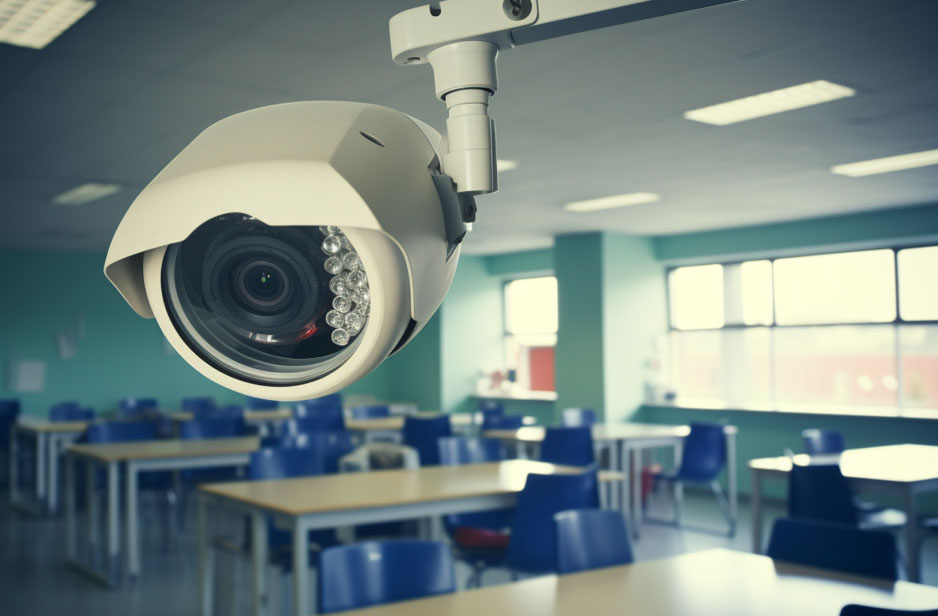The advent of the Internet of Things (IoT), a network of interconnected devices and systems, is revolutionising various sectors. IoT is not just limited to smart homes or advanced healthcare; its potential is rooted in modern education.
As learning environments worldwide lean towards technology-driven solutions, understanding how IoT in education is revolutionising learning becomes essential.
This network of smart devices promises to enhance the quality of learning and revolutionise traditional teaching. Making methods more responsive, efficient, and personalised.
Let's explore how IoT is setting the stage for a brighter, more interconnected future in the realm of education.
What Does IoT Stand For?
IoT stands for the "Internet of Things."

What is the Internet of Things?
The Internet of Things represents a vast and expanding network of devices and systems that communicate with each other over the Internet.
This connectivity goes beyond the devices we associate with the internet, like phones, tablets and computers.
IoT encompasses a broader range of items. Household appliances such as fridges and thermostats, industrial equipment and even wearables.
Imagine a morning when your alarm clock wakes you up and notifies your coffee maker to start brewing your morning cup. Or consider a situation where a farmer can track and control the moisture levels of their crops remotely. Both instances exemplify the applications of IoT.
The primary purpose of the Internet of Things is to gather data, send it, and then leverage it to achieve specific outcomes. Whether that's improving efficiency, enhancing user experiences, or forging new ways of interaction.
IoT in Education
In education, the IoT means creating environments where learning is more personalised, and communication is seamless.
Understanding the essence and potential of IoT is paramount for educators, students, and innovators alike, which is why we’re going to explore the benefits of IoT in Education.
IoT Communication and Collaboration
The transformative potential of IoT in the realm of education is vast. Among its advantages, the enhancement of communication and collaboration stands out prominently.
Connectivity is taken for granted. No more so than in education. It used to be that this connectivity would take place in the classroom. Covid-19 had other ideas. The recent global pandemic kickstarted a shift to online and hybrid learning methods.
The integration of IoT in education paves the way for real-time, dynamic interactions that break down traditional barriers. It has become a perfect solution for new ways of working.

- Smart Classroom Interactions: Devices such as smart whiteboards, connected tablets, and smart projectors have revolutionised the classroom. These tools enable educators to deliver interactive lessons where students can respond, pose questions, and share insights. The student is no longer a sponge of learning; with IoT, they become active collaborators in the learning journey.
- Bridging Geographical Gaps: The seamless connection offered by IoT means that students in disparate locations can collaborate on projects, share resources, and engage in group discussions as if they were in the classroom.
This global collaboration not only fosters diverse perspectives but also prepares students for a world where international partnerships and remote work is becoming the norm. - Instantaneous Feedback: IoT-powered educational platforms can provide immediate feedback. Whether it's a student answering a quiz on their tablet, or a group project shared on a collaborative platform, the instant data processing capabilities allow educators to assess, comment on, and grade work in real-time.
This accelerates the learning curve and ensures that students can immediately act upon feedback. It reinforces their understanding and corrects misconceptions. - Accessibility and Inclusivity: IoT devices can be tailored to suit the unique needs of each student. For those with disabilities or special needs, customised devices can ensure that they are not left out of collaborative exercises. A hearing-impaired student might receive real-time transcriptions of lectures, ensuring they are on par with their peers.
- Resource Sharing: Gone are the days when shared resources meant limited physical copies of textbooks or handouts. With IoT, digital resources can be shared, annotated, and collaborated upon by many students at once. This not only promotes a culture of collective learning but also ensures that resources are always available and up to date.
In essence, the introduction of IoT in education is knitting together a global classroom. The emphasis is on collective growth, shared experiences, and dynamic, two-way communication.
As institutions adopt these technologies, the landscape of education shifts towards a more inclusive, interactive, and interconnected environment.
Tailored Learning Experiences
Education has always been a cornerstone for advancement, but its methods have evolved. One of the most transformative shifts we're currently witnessing is the transition from a universal learning approach to more individualised experiences. This evolution has been further facilitated by the Internet of Things.

- Collection and Analysis of Individual Student Data: With the aid of IoT devices and platforms, educators can gather invaluable data on a student’s learning patterns and rate of progress. They can also monitor areas of skill and points of struggle.
This doesn't stop at tracking scores. It delves deeper into understanding a student's behaviour, participation, and engagement. Analysing this data paints a clearer picture of each student’s journey, making education a more evidence-driven sector.
- Development of Personalised Lesson Plans: By harnessing the insights from this data, educators can tailor lesson plans to align with individual learning curves. They are no longer required to deliver a standard curriculum. Now, they can adjust the content, teaching techniques, and even the pace of the lesson. to cater to each student's unique needs. This bespoke approach means that every learner is addressed at their level, maximizing their potential for comprehension and retention.
- Extra Resources for Struggling Students: Personalised education also ensures that no student is left behind. If a learner is grappling with specific concepts, IoT can trigger alerts to educators, enabling them to intervene with timely support.
This might involve supplementary materials, extra tutoring sessions, or alternative teaching methods. In contrast, those who excel can be provided with advanced modules to keep them challenged and engaged.
The Internet of Things is not just about introducing technology into classrooms. It's about reshaping the very core of learning experiences.
The focus has shifted from a broad audience to the individual, ensuring that each student's educational journey is as unique as they are.
Elevated Classroom Engagement
The conventional classroom with rows of students jotting down notes from a board has undergone a transformation.

The core of this remodel is the desire for increased engagement, ensuring students are not emotionless sponges of information but active participants in the learning process. IoT plays a pivotal role in this shift, enhancing classroom engagement in the following ways:
- Introducing Interactive Tools: One of the most significant advancements in the modern classroom is the inclusion of interactive tools. Powered by IoT, smart whiteboards, for instance, are a far cry from traditional blackboards. They allow educators to integrate multimedia content- from videos to infographics - into their lessons.
This multimedia approach caters to different learning styles. Whether a student is auditory, visual, or kinaesthetic, the vibrancy and dynamism these tools introduce make lessons more engaging, memorable, and understandable. - Facilitating Real-time Participation: Gone are the days when students would raise their hands and wait for their turn to answer. IoT-enabled devices empower them to take part in discussions, respond to questions, and engage in lesson-related activities in real-time.
With devices like tablets or specialised classroom apps, feedback becomes instantaneous, collaborations become effortless, and the pace of the lesson can adjust based on real-time student responses. - Bridging Conventional and eLearning Solutions: While the merits of in-person teaching are undeniable, the digital age has also brought forward the advantages of eLearning solutions. IoT acts as a bridge between these two realms.
For example, a lesson could start in a physical classroom and then transition to an online platform where students engage in interactive simulations or group projects. This blended approach ensures that students get the best of both worlds, maximising engagement, and retention.
By introducing dynamic tools, facilitating real-time engagement, and seamlessly integrating digital platforms into the learning process, IoT ensures that the modern classroom is a hub of curiosity, collaboration, and active engagement.
IoT Security in Schools and Universities
The education landscape has evolved beyond the curriculum. The physical and emotional well-being of students is at the forefront of every mind in 2023.
As institutions grapple with various challenges, from unauthorised intrusions to ensuring safe student transit, the Internet of Things emerges as a beacon of hope, fortifying school safety and security measures.

- Monitoring with Connected Security Cameras: The value of real-time surveillance cannot be overstated in today's times. IoT-enabled security cameras, strategically placed across school premises, offer a continuous, vigilant eye.
These cameras aren't passive recording devices. Advanced models can detect unusual activities, recognise unauthorised individuals, and even send immediate alerts to school authorities or security personnel. Such proactive surveillance ensures timely interventions, preventing potential threats. - Safe Transportation through Bus Tracking: The journey to and from school is as critical as the time students spend within the school walls. With IoT, school buses can be equipped with GPS tracking systems.
These systems provide real-time location updates, ensuring that the buses stay on their designated routes. If a bus were to encounter an unexpected delay, breakdown, or emergency, school authorities and parents can be alerted.
This not only ensures the safety of students in transit but also offers peace of mind to concerned parents. - Access Control with Smart Systems: Physical barriers, like walls and gates, are no longer enough to deter unauthorized access. IoT steps up security with smart locks and access control systems.
These systems can recognise and permit entry only to authorised personnel. Utilising biometrics, RFID tags, or unique access codes. Any attempt at unauthorised entry can trigger alarms, notifying security and ensuring swift action.
The integration of IoT in the realm of school safety and security is more than just a technological upgrade; it's a commitment to the well-being of every student and staff member. Leveraging connected devices and systems, schools can offer a safer, more secure environment. Education can thrive without the overshadowing concerns of potential threats.
IoT Makes the Boring Stuff, Less Boring
In education, administrative tasks, while essential, can often overshadow the primary goal: teaching. Enter the IoT, which is revolutionising these tasks and ushering in an era of enhanced educational fluidity.
IoT-enabled systems are transforming time-consuming tasks like attendance marking and grading into automated processes. IoT-based attendance systems can detect students as they enter the classroom, while certain digital assessment tools offer auto-grading features.
Such automation allows educators to redirect their energies. Instead of heaps of paperwork or data entry, they can now concentrate on the art of teaching. Deepening their interactions with students and enhancing the instructional quality.
This streamlined administration doesn't only benefit educators. Students experience a more organised learning journey with fewer disruptions. Instant feedback from grading systems enables rapid understanding and improvement. With teachers now having more time for interactive lessons, the quality of education is instantly uplifted.
IoT's integration into educational administration is reshaping priorities. By focusing on enriched learning and effective teaching, schools are crafting a more responsive and student-centric environment.
What are the potential privacy concerns associated with IoT in education?
With the integration of IoT in education, there arise concerns about the privacy and security of students' data. Devices constantly collecting and analysing data might inadvertently capture sensitive information. Additionally, if not secured properly, this data could be susceptible to breaches, posing a risk to student confidentiality. It’s vital that educational institutions have the appropriate cyber security measures and disaster recovery plans in place.
How can schools ensure that the introduction of IoT does not widen the digital divide among students?
It's crucial for educational institutions to ensure equitable access to IoT-enabled resources. Schools might consider loan programs for IoT devices, providing subsidised internet connectivity, or setting up community tech centres. Continuous training and support should also be offered to ensure all students can effectively use and benefit from these advancements.
How will the role of educators change with the increased reliance on IoT in classrooms?
While IoT automates and enhances several aspects of teaching, the role of educators remains pivotal. Teachers will transition from traditional instruction to becoming facilitators and guides in a tech-enhanced learning environment. They will play key roles in integrating technology meaningfully, interpreting data to aid personalised learning, and ensuring that human-centric skills, such as critical thinking and empathy, are nurtured alongside tech proficiency.
Key Takeaways: The Future of Learning with IoT
- IoT's Broad Spectrum: Beyond just phones and tablets, spanning household devices to wearables.
- Enhanced Learning: More personalised, seamless experiences with digital integration.
- Boosted Collaboration: IoT facilitates online/hybrid learning, turning students into active collaborators.
- Global Classroom: Bridges geographical gaps, fosters real-time feedback, and ensures inclusivity.
- Data-Driven Education: Provides insights into student behaviors, enabling tailored lesson plans.
- Elevated Engagement: Merges interactive tools, real-time participation, and eLearning.
- Safety and Security: Features like connected cameras, bus tracking, and smart access control.
- Streamlined Administration: Automates tasks, allowing educators to prioritise teaching.
- A "Smart" Future Ahead: Institutions can partner with IoT developers to lead this transformative journey.






